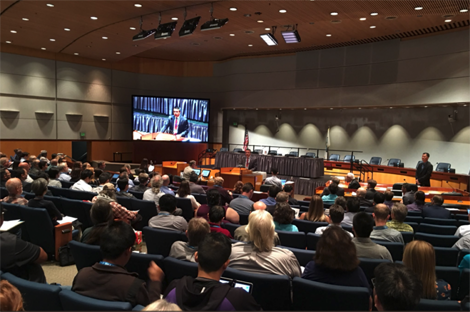Communication Skills
Communication Skills
‘Communication skills’’ program offers knowledge & skills, enhancing participants’ ability to bring about a complete change in themselves by taking control of their communication and presentation skills, communicate powerfully and cogently with all, become proficient in giving great presentations in the company and to the outside world as well.
It is a 2 day training program to take peoples personal effectiveness to the next level. This program trains people in developing and enhancing their communication and interpersonal skills for any context to produce measurable results on a daily basis.
Objective:
To introduce to the participants the concept of communication strategies, verbal and nonverbal communication, powerful platform presence etc.
To enable the participants to generate high professional communication expertise on a daily basis with the help of much developed communication and presentation skills.
To enhance the participants communication and presentation skills by training them on :
How to organize their thoughts and communicate powerfully one on one or presenting to an audience of few to large numbers
How to appropriately react in high pressure situations
The 3Vs of communication
How to be congruent in communication
How to take charge of discussions – both formal and informal, internal and external
How to overcome barriers to communication
How to be a strong listener
How to contribute more to company’s success

ROI:
With the participants’ communication and presentation skills competency developed and enhanced, it will enable them to influence outcomes and get their way in all interactions in a positive manner. This will result in:
1. Enhanced productivity of employees
2. Gained efficiencies and confidence in their personal and professional discussions
3. Healthier relationships
4. Maximized business opportunities
5. Reduced preventable losses – costs saved
6. Internal & external customers satisfaction
7. Employee retention
8. Increase in company’s bottom line results on all fronts

Methodology
The participants will be provided with trainer presentation along with discussions and opportunity for active participation by way of:
1. Role plays
2. Simulation
3. Games
4. Exercises
5. Case studies
6. Audio/Visual etc
7. Use of trigger cards
Assessment and testing
The performance of participants will be assessed through:
Skill assessments test – pre and post (verbal and written)
Videography wherever required
Platform tests
Written tests (Open ended and closed ended)
Observation
Trainer post training evaluation/hand holding after a month to stitch and strengthen loose ends

Representative of content outline
Competencies and sub competencies in communication skills – an example of typical interaction between two employees on a particular issue / concern
1. Building relationship
- Greets and shows interest in the person interacting with
- Uses words that show genuine care and interest throughout the interaction
- Uses tone, pace, eye contact and posture that show genuine interest in the interaction
- Responds explicitly to each other’s ideas, feelings and values
2. Open the discussion
- Allows the other person to complete opening statement without interruption
- Asks ‘is there anything else’ to elicit full set of interests / concerns
- Explains and/or negotiate an agenda for the interaction
3. Gathers information
- Begins with narrative using open-ended questions (tell me about)
- Clarifies details as necessary with more specific or yes/no questions
- Summarizes and gives each other opportunity to correct or add information
- Transitions effectively to additional questions
4. Understands each others perspective
- Asks about issues, concerns, circumstances, reason of conflict if any etc.
- Elicits each other’s beliefs, concerns and expectations about the issue at hand, concerns etc.
5. Shares information
- Assess each other’s understanding of issues / concern and desire for more information
- Explains using words that are easy for each other to understand
- Asks each other if they have any further questions / paraphrasing
6. Reaches agreement (if new/changed)
- Includes choices and decisions to the extent they desire
- Checks for mutual understanding of issue / concern and the agreement reached
- Asks about the follow up if required
7. Provides closure
- Asks each other if they have further questions, concerns or other issues
- Summarizes
- Clarifies follow up
- Acknowledge each other and close communication



